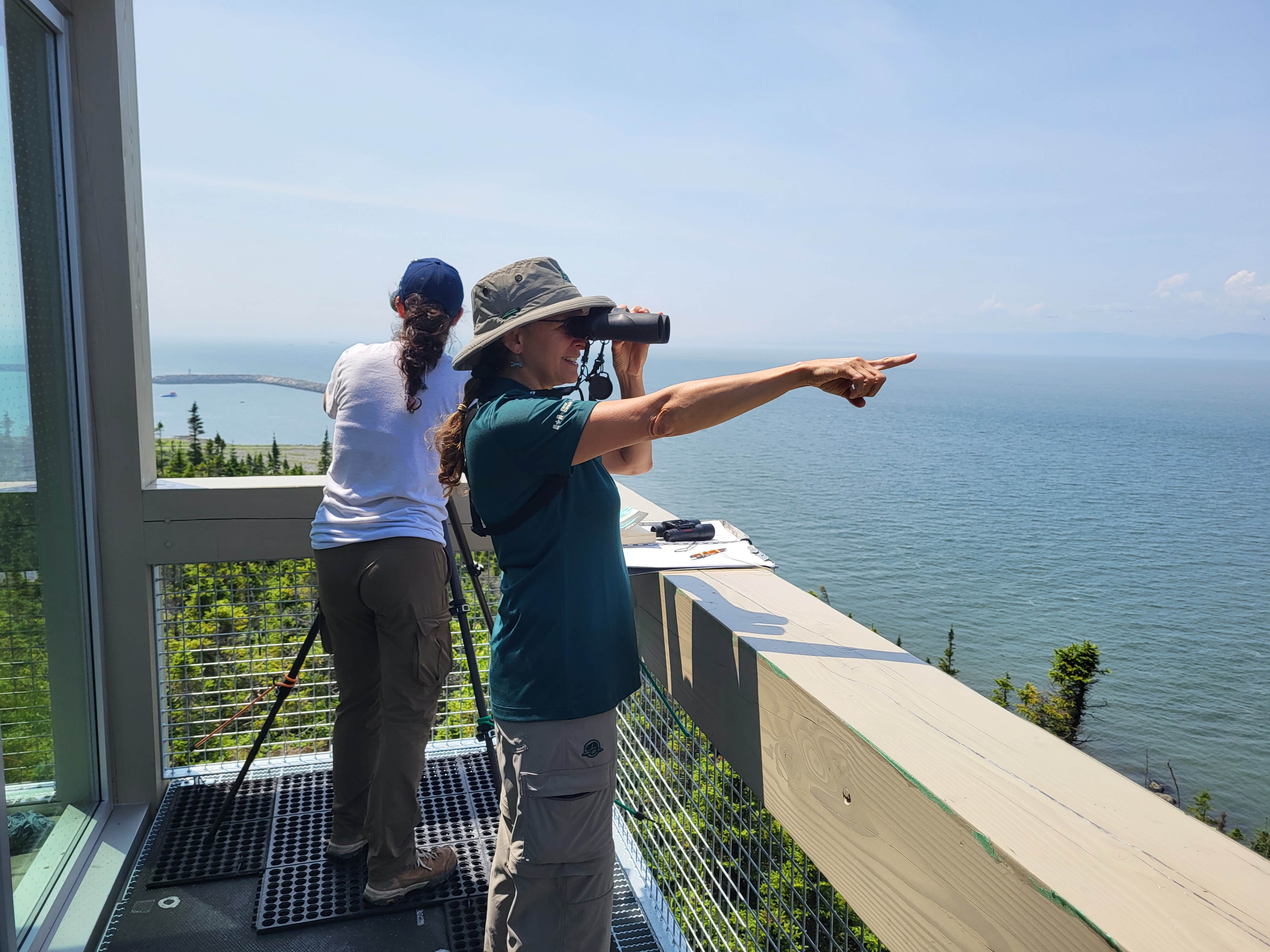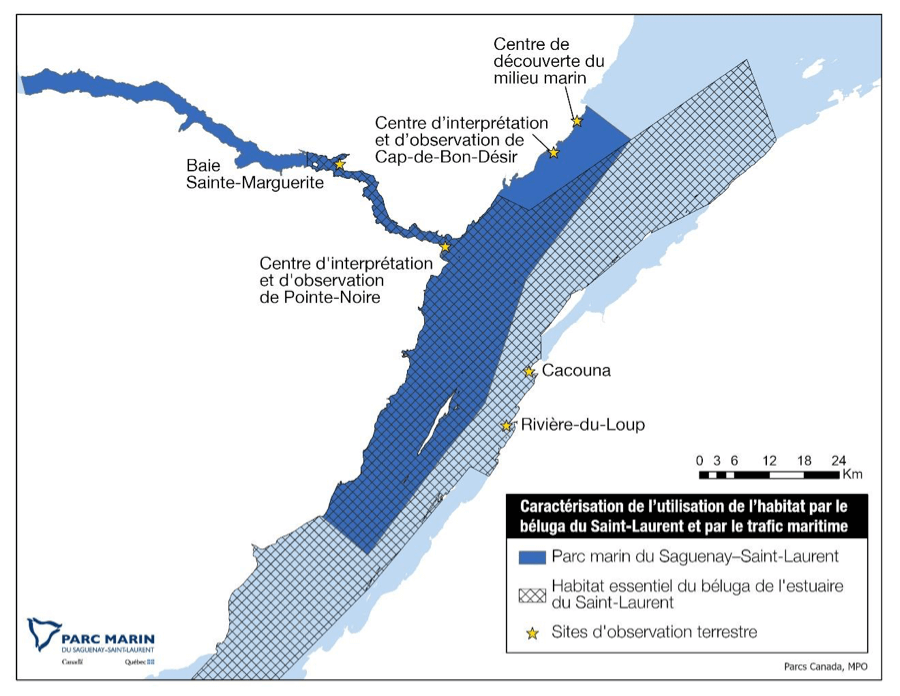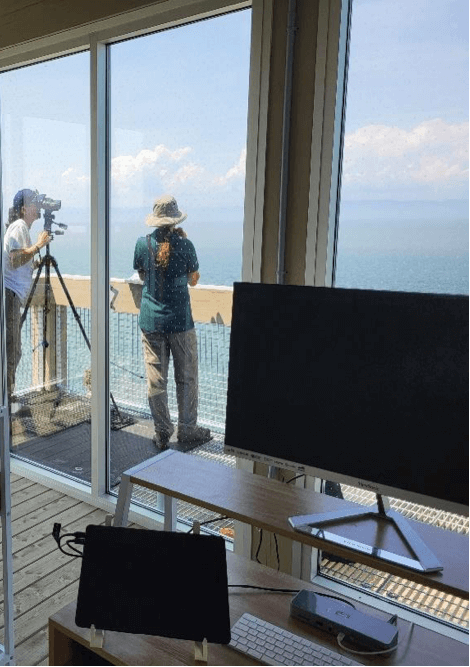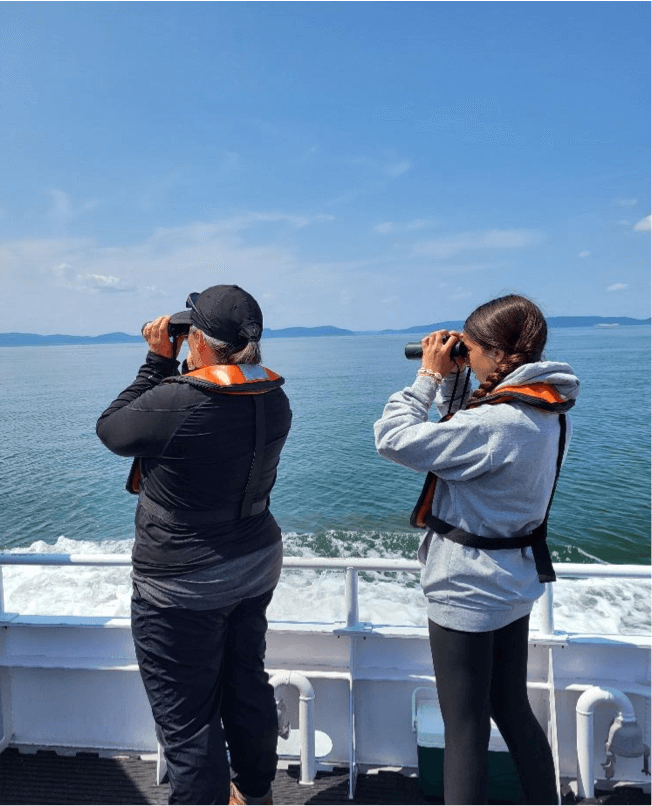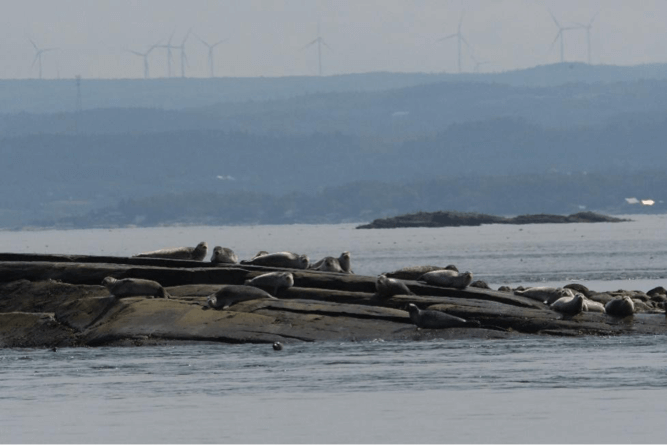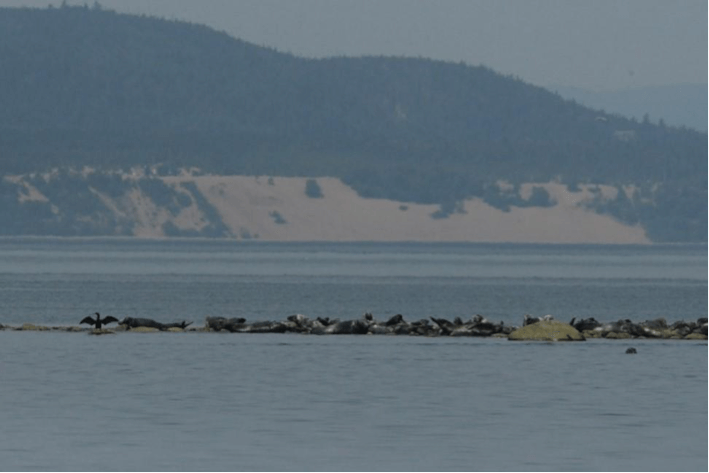By Cristiane Albuquerque, ecologist and acting team lead at the Saguenay-St. Lawrence Marine Park
I had the opportunity to spend five days on the south shore of the St. Lawrence estuary, including four on Gros-Cacouna Mountain. This place has been used by the Wolastoqiyik Wahsipekuk First Nation (WWFN) since ancient times as a gathering place as well as a navigating guide, explains Sonia Giroux, project director at the Marine Mammal Observation Network (MMON), during the course of my stay.
Since 2014, the Parks Canada land monitoring protocol has been applied on the south shore in collaboration with MMON. This monitoring, which aims to characterize the patterns of coastal sector use by marine mammals and watercraft, is carried out from shore at several locations bordering the Saguenay-St. Lawrence Marine! This is the first time I have had the chance to make the observation from this side of the St. Lawrence Estuary.
The observatory
My first task for the week is to check the binoculars installed at WWFN’s new observatory. As the observer collects her data, the rangefinder binoculars can be used to estimate the positions of both belugas and watercraft. To do this, they must always be installed the same way, i.e. with geographical markers so that the latitude and longitude of the observations can be calculated using trigonometry! Yes, yet another use of trigonometry!
After my visit, the observer is ready to continue her work, in what I consider to be the best equipped “outdoor office” of any land-based observation site! The site’s elevation makes it ideal for terrestrial observation and groups of belugas are often seen quite close to shore. These are ideal conditions not only for applying the monitoring protocol, but also for observing this species at risk without disturbing its activities.
The space dedicated to research at this new observation site is divided into three areas: an outdoor lookout, an area for data analysis and data entry, and a storage space for research equipment. What luxury!
Data collected since 2014 indicate that belugas are frequently observed opposite Gros-Cacouna Mountain. This sector has the fewest boat passages of any site in the Marine Park observation network. The area probably affords the belugas that use it the peace and quiet they need. During my stay, I saw just two boats passing through the study area.
The fog, which has been very frequent this season, did not affect visibility in the study area, which extends up to 2 nautical miles from the coast. And the belugas don’t disappoint! This past week, several groups have been observed at the site very close to shore, sometimes feeding, sometimes resting. Those that were foraging were in an area about 15 to 20 metres deep. Whenever they surfaced they would spit out a stream of water. A few gulls were nearby and, much to my surprise, would approach the belugas just before they emerged to breathe. This behaviour intrigued me.
This visit offered me a more intimate connection with this critical beluga habitat sector and will help me better interpret the data that were collected. Second goal achieved! To cap off the week, I had the chance to board the Ciktek for the first time. A calm sea and fantastic visibility awaited us! It was the perfect day to join the Ciktek crew on the water for harbour seal monitoring. This time, there were six of us on board: the captain and his mate, my colleague from Parks Canada and I, as well as chief Wolastokuk warden Caroline Morais and her daughter, who was on her first trip aboard the boat. During our trip between Cacouna and the Razades Islands, we tallied about 200 harbour seals as well as a few grey seals. Subsequently, over 100 harbour seals were counted around Île Rouge! All this in addition to the innumerable seabirds that we were able to observe.
It is with a tremendous feeling of gratitude that I’m ending my week! The beauty and diversity of life near the south shore of the St. Lawrence Estuary is amazing! I feel very fortunate to have been able to spend a week at the First Nation’s new observation site and to be able to contribute my two cents to projects involving Indigenous communities.
Please note that the Gros-Cacouna whale-watching site is still under construction. Only researchers have access to it for the time being. The observatory is expected to be open to visitors in June 2024. Stay tuned for the inauguration of Putep’t-awt: The Beluga Trail!


